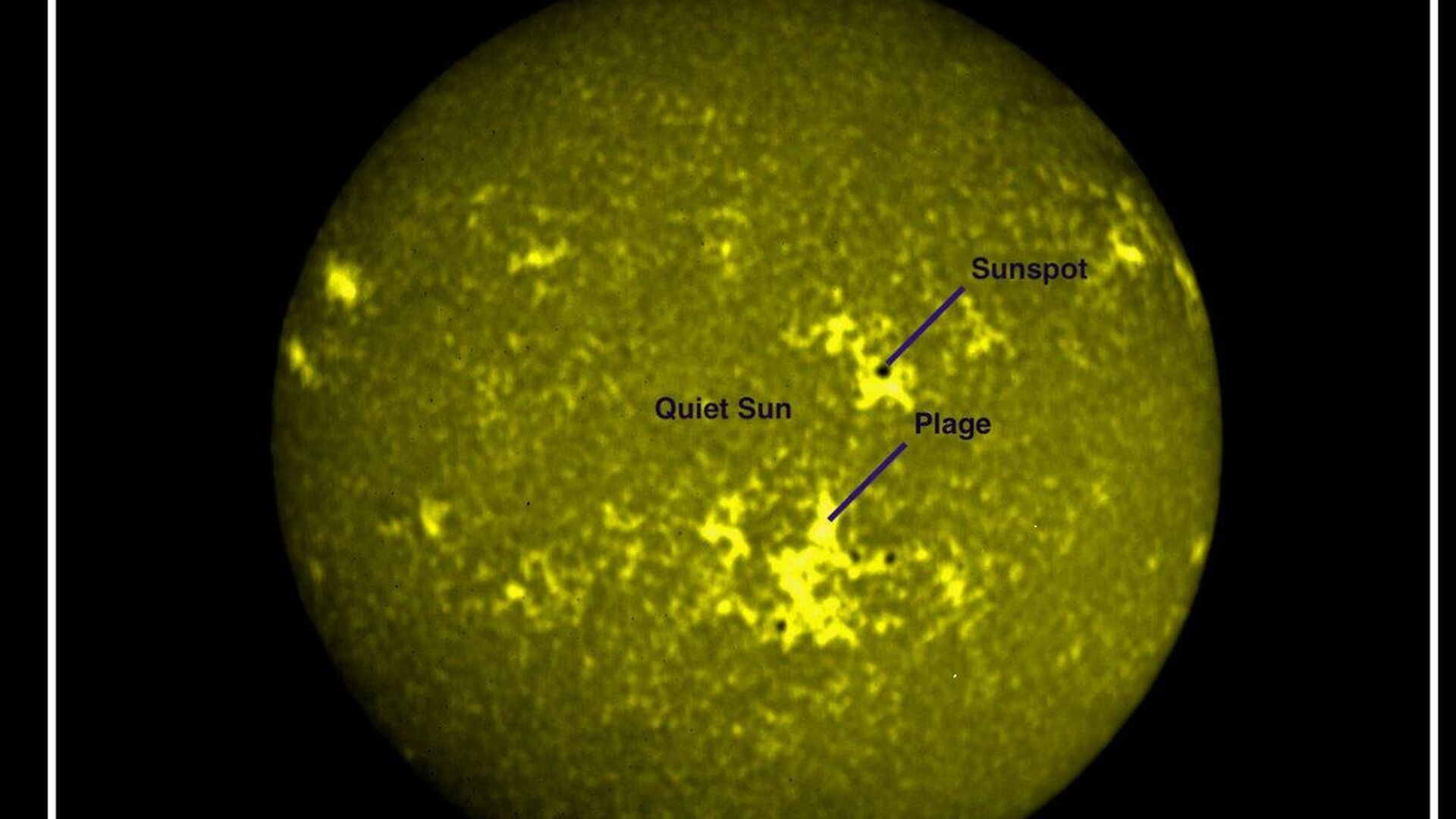https://sputniknews.in/20231209/aditya-l1-mission-captures-full-disk-images-of-sun--5772796.html
Aditya-L1 Mission Captures Full-Disk Images of Sun
Aditya-L1 Mission Captures Full-Disk Images of Sun
Sputnik India
The Solar Ultraviolet Imaging Telescope (SUIT) instrument on board the Aditya-L1 spacecraft has successfully captured the first full-disk images of the Sun, The Indian Space Research Organisation (ISRO) announced
2023-12-09T15:01+0530
2023-12-09T15:01+0530
2023-12-09T15:01+0530
science & tech
science & tech
india
indian space research organisation (isro)
x (former twitter)
https://cdn1.img.sputniknews.in/img/07e7/0c/09/5773570_0:263:1200:938_1920x0_80_0_0_c3f1462ee384d5a6f3dd44dcaee2ea81.jpg
The Solar Ultraviolet Imaging Telescope (SUIT) instrument on board the Aditya-L1 spacecraft has successfully captured the first full-disk images of the Sun, The Indian Space Research Organisation (ISRO) announced. The SUIT payload captured full-disk images of the Sun in near ultraviolet wavelengths. “On November 20, 2023, the SUIT payload was powered on. Following a successful pre-commissioning phase, the telescope captured its first light science images on December 6, 2023”, the ISRO said in a statement on Friday.SUIT observations will help scientists study the dynamic coupling of the magnetized solar atmosphere and assist them in placing tight constraints on the effects of solar radiation on Earth’s climate, the space agency said.Launched on September 2, 2023, the Aditya L1 is positioned in a halo orbit around the Lagrange point 1 (L1) of the Sun-Earth system, approximately 15 lakh km from Earth, offering an opportunity to observe the Sun and other solar activities without interruption.
https://sputniknews.in/20231024/isro-chief-favours-inclusion-of-women-in-space-missions-5049084.html
india
Sputnik India
feedback.hindi@sputniknews.com
+74956456601
MIA „Rossiya Segodnya“
2023
Sushil Kumar
https://cdn1.img.sputniknews.in/img/07e7/0a/14/4972259_0:0:613:612_100x100_80_0_0_f89d4c7eaa17d23ebb41934f3e07e508.jpg
Sushil Kumar
https://cdn1.img.sputniknews.in/img/07e7/0a/14/4972259_0:0:613:612_100x100_80_0_0_f89d4c7eaa17d23ebb41934f3e07e508.jpg
News
en_IN
Sputnik India
feedback.hindi@sputniknews.com
+74956456601
MIA „Rossiya Segodnya“
Sputnik India
feedback.hindi@sputniknews.com
+74956456601
MIA „Rossiya Segodnya“
Sushil Kumar
https://cdn1.img.sputniknews.in/img/07e7/0a/14/4972259_0:0:613:612_100x100_80_0_0_f89d4c7eaa17d23ebb41934f3e07e508.jpg
solar ultraviolet imaging telescope (suit), aditya-l1, isro, unprecedented images, taken using eleven different filters,
solar ultraviolet imaging telescope (suit), aditya-l1, isro, unprecedented images, taken using eleven different filters,
Aditya-L1 Mission Captures Full-Disk Images of Sun
India’s first space-based mission to study the Sun, the Aditya-L1, has captured pictures of our solar system’s star. The ISRO termed the same as an "unprecedented" feat that would help scientists in a number of ways.
The Solar Ultraviolet Imaging Telescope (SUIT) instrument on board the Aditya-L1 spacecraft has successfully captured the first full-disk images of the Sun, The Indian Space Research Organisation (ISRO) announced.
The SUIT payload captured full-disk images of the Sun in near ultraviolet wavelengths.
The images include the first-ever full-disk representations of the Sun in wavelengths ranging from 200 to 400 nm. They provide pioneering insights into the intricate details of the Sun's photosphere and chromosphere, the ISRO posted on X, formerly known as Twitter.
“On November 20, 2023, the SUIT payload was powered on. Following a successful pre-commissioning phase, the telescope captured its first light science images on December 6, 2023”, the ISRO said in a statement on Friday.
“These unprecedented images, taken using eleven different filters, include the first-ever full-disk representations of the Sun in wavelengths ranging from 200 to 400 nm, excluding Ca II h. The full disk images of the Sun in the Ca II h wavelength have been studied from other observatories”, it added.
SUIT observations will help scientists study the dynamic coupling of the magnetized solar atmosphere and assist them in placing tight constraints on the effects of solar radiation on Earth’s climate, the space agency said.
Launched on September 2, 2023, the Aditya L1 is positioned in a halo orbit around the Lagrange point 1 (L1) of the Sun-Earth system, approximately 15 lakh km from Earth, offering an opportunity to observe the Sun and other solar activities without interruption.


![Orion Nebula in NIRCam long-wavelength [infrared] channel, imaged by James Webb Space Telescope (JWST) Orion Nebula in NIRCam long-wavelength [infrared] channel, imaged by James Webb Space Telescope (JWST) - Sputnik India, 1920, 24.10.2023](https://cdn1.img.sputniknews.in/img/07e7/0a/14/4977104_0:77:2048:896_1920x0_80_0_0_6017807cf3669b3500d480b24fe08513.png)
